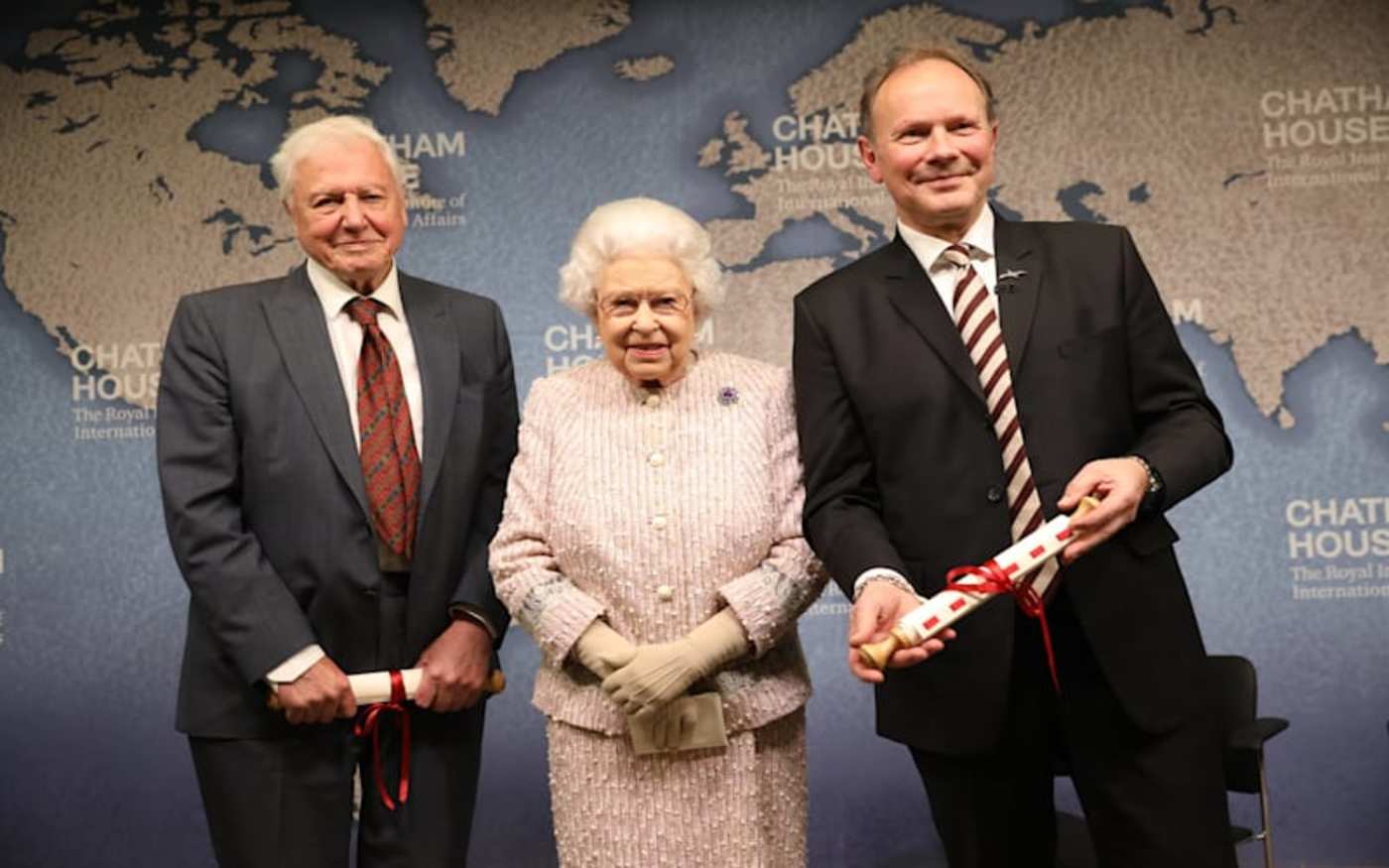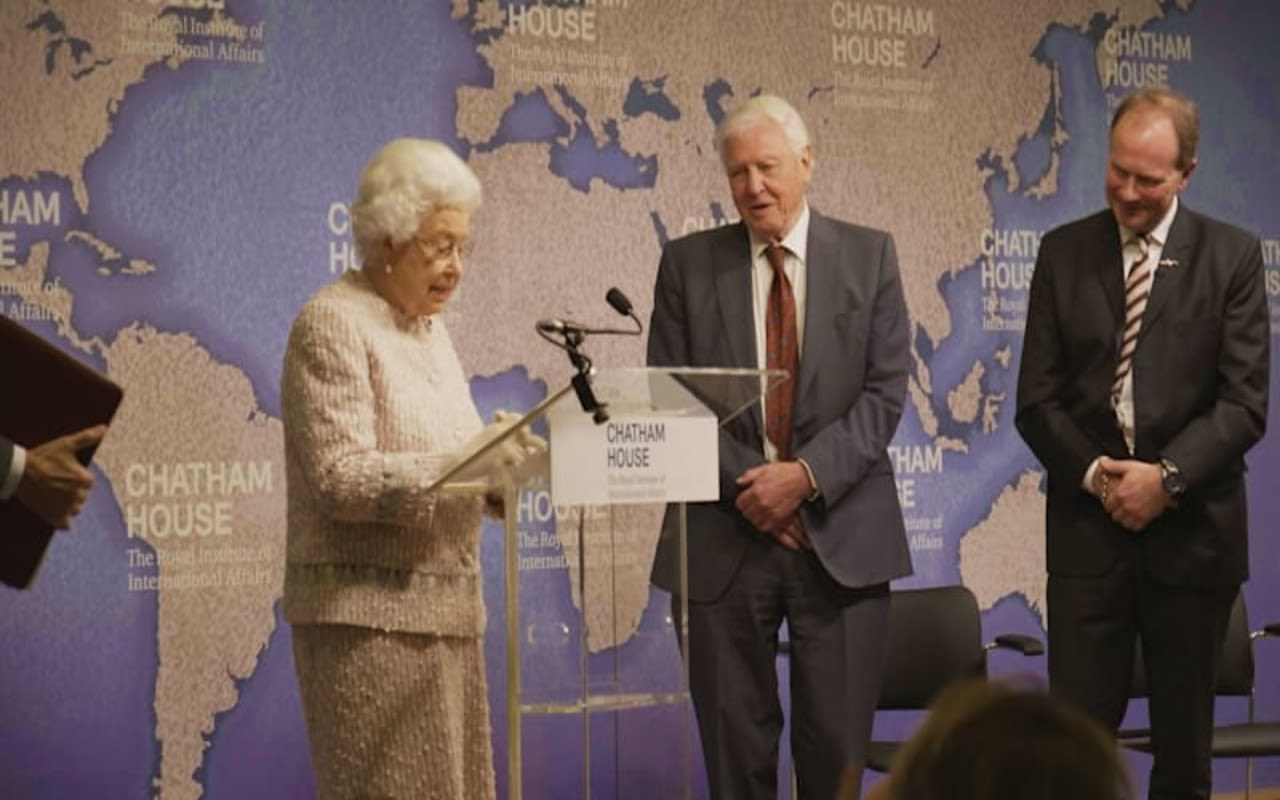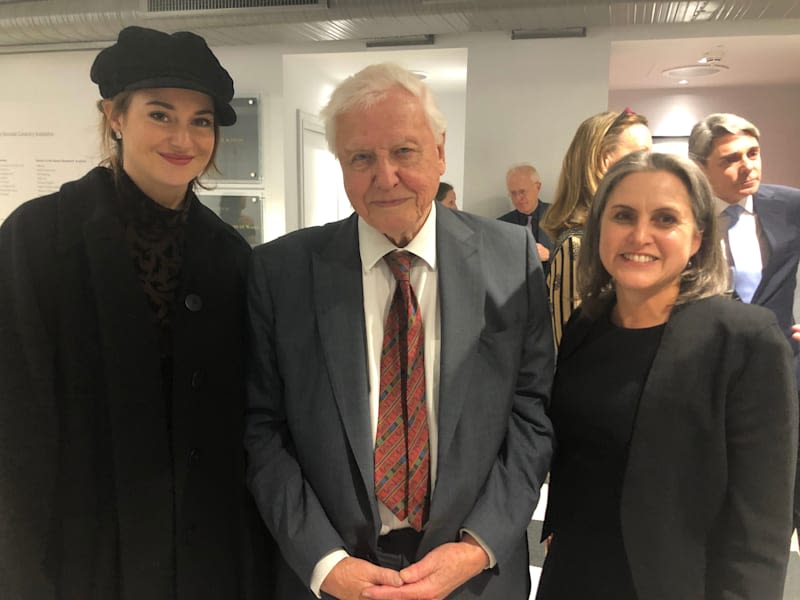The ocean is rising and so must we: time for #Love30x30 ocean vision
A couple of days ago it was my huge pleasure to speak at the annual Chatham House Prize ceremony in London and congratulate this year’s winners – Sir David Attenborough and the BBC Studios Natural History Unit – in person.
They were recognised for creating the global phenomenon of Blue Planet II and galvanising the public on a truly oceanic scale. The Chatham House Prize is an annual award presented to "the statesperson or organisation deemed by Chatham House members to have made the most significant contribution to the improvement of international relations in the previous year".
Seen by one in ten people on Earth, the Blue Planet II effect has been electrifying. After watching an Albatross chick being fed with pieces of plastic – and other harrowing, mesmerising images – an incredible 88 per cent of viewers changed their lifestyles.
The ocean plastic crisis has captured the public imagination, sparking new laws, regulations and technologies to fight single-use plastics in countries and cities around the world. But the mobilisation against plastic is just the tip of the iceberg of what’s needed. It must be a gateway to action on the even more pernicious crises facing the ocean, not an endpoint.
Nature is angry – and it’s not alone. Teenagers are angry too. If Sir David is one of the visionary elders of our time, then Greta Thunberg and the global youth movement are the rise-up generation that’s not going to take the apathy of the powers that be lying down anymore. And rightly so. IPCC report on the Ocean and Cryosphere in a Changing Climate tells an almost dystopian tale of marine heatwaves, rising seas, dying corals and vanishing ice. The natural world we see on the news resembles war zones: raging fires, floods and storms; a million species threatened with extinction; starving polar bears prowling through villages; toxic algal blooms, coral bleaching and oil spills.
The ocean is rising and so must we. 2020 could be the biggest year yet for marine protection yet, with multiple opportunities to channel the momentum of Blue Planet II and deliver clear, hopeful, regenerative outcomes – but only if critical, bold decisions are made.
To help inspire these decisions, Ocean Unite has launched our 30x30 Ocean Vision, a positive quest for a healthy, regenerating and resilient ocean centred around the goal to strongly protect at least 30 per cent of the ocean by 2030. From pole to pole, deep sea to coast, and everywhere in between, we need large, networked safe havens where marine life can replenish and fortify itself.
Today just two per cent of the ocean is truly safe from the tentacles of human exploitation. There’s a long way to go to reach the 30 per cent protection goal – the minimum level scientists say is needed for a thriving, resilient ocean – in just 10 years, but we can do it. In 2020, our 30x30 journey can get some serious wind in its sails if three key opportunities are seized.
First, after 15 years in the works, in early April 2020 the UN is scheduled to finalise the text for a new high seas biodiversity treaty under the Law of the Sea Convention. It’s an unmissable chance to protect life in the forgotten half of the planet – the biggest biosphere on Earth. Crucially, without this treaty, we cannot achieve 30 per cent protection as there is currently no mechanism to create marine reserves in the high seas. A strong high seas treaty is imperative if we are to finally end the age of impunity out in the open ocean.
Secondly, governments will gather in Kunming, China in October to set the 2030 global protected area targets under the UN’s Convention on Biological Diversity. They are promising a new Global Deal for Nature – and Governments need to immediately scale up their ambitions and unite behind the 30x30 goal. Combined with a massive ramp-up of action to meet the 1.5 degrees Celsius Paris Climate Agreement target, this will set in motion the transformation needed to combat the climate, biodiversity and ocean emergencies.
The third key decision in 2020 takes us to very ends of the Earth. 2020 marks 200 years since the discovery of Antarctica. At the height of the Cold War, countries came together to declare the frozen continent a place of peace and science for all humanity. Now it’s time to protect the still teeming waters of the Southern Ocean that surrounds it and the amazing marine life that thrives there. 30x30 Ocean Vision, a positive quest for a healthy, regenerating and resilient ocean centred around the goal to strongly protect at least 30 per cent of the ocean by 2030.
From pole to pole, deep sea to coast, and everywhere in between, we need large, networked safe havens where marine life can replenish and fortify itself. Today just two per cent of the ocean is truly safe from the tentacles of human exploitation. There’s a long way to go to reach the 30 per cent protection goal – the minimum level scientists say is needed for a thriving, resilient ocean – in just 10 years, but we can do it. In 2020, our 30x30 journey can get some serious wind in its sails if three key opportunities are seized.
It’s a decision that cannot be taken for granted. Earlier this month, the Commission responsible for conserving Antarctic marine life once again ended its annual meeting without designating long called-for, vital marine protections in the waters off East Antarctica, the Weddell Sea and Antarctic Peninsula. When they next meet, in October 2020, they must not fail again. Creating these three fully protected areas, along with the already established Ross Sea marine reserve, will result in some seven million km-squared of the Southern Ocean being protected: the best possible 200th anniversary present for Antarctica.
We need to keep the marine momentum going and stay positive and proactive, even when faced with the onslaught of scary science and extreme events. If our governments step up and make bold choices in 2020, we can put ourselves on track for protecting 30 per cent of the ocean and turn the tide on global heating and species loss. It’s a future still within our grasp, and one worth fighting for. Join the wave of change and help deliver the #Love30x30 Ocean Vision.
This is a guest blog and may not represent the views of Virgin.com. Please see virgin.com/terms for more details.



